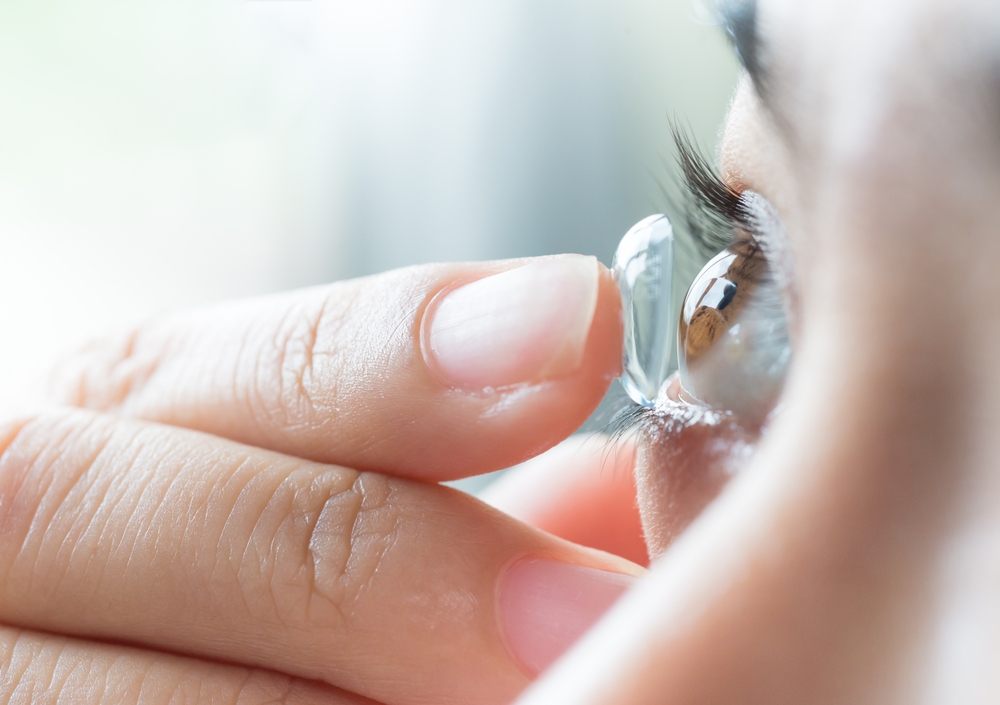## What is Color Blindness?
Color blindness, also known as color vision deficiency, is the decreased ability to see color or differences between colors. It is generally an inherited condition and affects a significant percentage of the population.
There are different types of color blindness:
– **Red-green color blindness** – the most common type, involving difficulty distinguishing between reds, greens, browns, and oranges. This is usually a sex-linked genetic disorder affecting about 8% of males and 0.5% of females.
– **Blue-yellow color blindness** – a much rarer type involving difficulty telling blue from green and purple from pink. This affects fewer than 1% of the population.
– **Total color blindness** – complete inability to see color, extremely rare. People with this condition see only shades of gray.
Color blindness is typically caused by a defect in the development of one or more sets of retinal cones that perceive color in light and transmit that information to the optic nerve. It can also be acquired later in life due to disease, injury, or toxicity.
Most people with color blindness are able to adapt and have a normal life. However, certain careers requiring acute color perception are unsuitable. There is no cure for color blindness, but tinted filters/lenses can help make some colors more distinguishable. Overall prevalence is estimated at 1 in 12 men (8%) and 1 in 200 women (0.5%).
## Do Color Blind Contacts Work?
Color blind contact lenses work by filtering light to change the way colors are perceived by the wearer. They are designed with special filters or coatings that block certain wavelengths of light from reaching the retina. This changes the color information that is sent to the brain, allowing people with color blindness to perceive colors more accurately.
Here’s how color blind contact lenses work to correct color vision:
– They filter out wavelengths of light that overlap or are confused by people with color deficiencies. For example, lenses for red-green color blindness will block some greens and reds to sharpen the contrast between the two.
– They increase the separation between colors on the light spectrum that appear similar to color blind people. This helps differentiate colors like reds/greens, blues/purples, oranges/browns, etc.
– They boost specific color wavelengths that people with color blindness have difficulty detecting. This enhances color perception and vibrancy.
– They balance the light signals being sent to the eye to correct color confusion. The optical filters correct the color vision processing that happens in the retina and optic nerve.
The pros of color blind contact lenses are that they can immediately improve ability to distinguish colors, require no training or therapy, and allow more access to color-related careers. The cons are that results vary by individual, they don’t work for complete color blindness, and they must be worn constantly for continuing effects. While promising, color blind contacts do not replicate normal color vision or completely “cure” color blindness. The effects are mostly limited to the time that the contacts are worn.
## Types of Color Blind Contacts
There are a few different brands and types of color blind contact lenses available. Here’s an overview of some of the main options:
### Colorkinds Contacts Lenses
Colorkinds lenses are designed with special filters that help block certain wavelengths of light. This helps establish a more accurate color spectrum for people with common types of red-green color blindness.
Colorkinds is one of the most well-known brands for color blind glasses and contacts. Their technology aims to improve color discrimination and reduce confusion between colors like reds/greens or blues/purples.
### X-Chrome Lenses
X-Chrome contact lenses also use filtering technology to improve color perception for the color blind. They produce lenses targeted at different types of color blindness including protan, deutan and tritan.
Their lenses claim to enhance color definition and brightness. A key difference from EnChroma is they do not block as much light, so may offer improved low light and night vision compared to other color blind contacts.
### Vivid Color Lenses
Vivid Color contacts by CooperVision are daily disposable color contacts designed to enhance color perception for mild to moderate red-green color blindness.
They aim to improve the vibrancy of colors without significantly reducing light transmission. Could be an option for improving color discrimination without major changes to contrast or light levels.
### ColorightLenses
Coloright lenses are made by Dutch company Lens Norway. They also target red-green color blindness through manipulating the light spectrum that reaches the eye.
This brand claims to allow 92% of light to filter through, maintaining good vision while enhancing color. Could provide a more subtle enhancement for moderate forms of color blindness.
The different brands use varied approaches to filtering and manipulating light entering the eye to address forms of red-green color vision deficiency. Overall capabilities and results can vary substantially depending on the severity and type of color blindness.
## Getting Color Blind Contacts
Color blind contacts require a prescription from an optometrist or ophthalmologist. The eye doctor will examine your eyes, determine the type and severity of color blindness, and write a prescription for contacts specialized to enhance color perception.
Color blind contacts are available from select online retailers that specialize in lenses and solutions for color blindness. Some options include:
– [Colorkinds](https://www.covisn.com)
– [Colorlens4less](https://www.colorlens4less.com/)
– [Colorview](https://colorview.com/)
Costs vary depending on the specific color blind contacts prescribed, but expect to pay $100-300 for a pair of color contacts. The contacts must be replaced every 6 months to 1 year. Annual costs including lens replacement can be $400-600.
Some vision insurance plans may provide partial coverage for medically necessary contacts. Check with your provider to see if color blind contacts are covered. Government and nonprofit organizations also provide some assistance programs to offset costs.
Working with an eye care professional is important not just for getting a prescription, but also proper fitting and training on how to use color blind contacts correctly. Be sure to follow all wearing, cleaning, and replacement guidelines to get the most benefit and avoid eye health complications.
## Using Color Blind Contacts
Color blind contact lenses need to be inserted, removed, cleaned, and replaced just like regular contact lenses. Here are some tips for using color blind contacts properly:
**Inserting Contacts**
– Always wash your hands thoroughly before handling contact lenses. Dry your hands completely.
– Take the contact lens out of the case and rinse it with contact lens solution.
– With your dominant hand, use your index finger to gently pull down the lower eyelid. Use your middle finger on the other hand to pull up the upper eyelid.
– Look up and gently place the contact on your eye. Release your eyelids and blink a few times to center the lens.
– Repeat the process for the other eye.
**Removing Contacts**
– Always wash your hands first.
– Looking up, use your index finger to slide the lower contact to the white part of your eye.
– Gently pinch the contact between your thumb and index finger. Remove it.
– Repeat for the other eye.
**Cleaning Contacts**
– Rub a few drops of contact lens solution onto each side of the lenses.
– Rinse thoroughly with contact lens solution.
– Store lenses in fresh disinfecting contact lens solution when not being worn.
– Replace solution daily.
**Wearing Schedule**
– Follow the recommended wearing schedule from your eye doctor.
– Build up wear time gradually. Begin with just 2-4 hours of wear per day.
– Never sleep in color blind contacts unless approved by your eye doctor.
– Remove, clean, and disinfect lenses each time after wearing.
– Give your eyes a break with glasses every few days if needed.
Properly caring for color blind contacts is crucial for clear vision, comfort, and eye health. Always follow your eye doctor’s instructions. Let them know if you have any concerns while using the contacts.
## Improving Color Perception
Color blind contact lenses work by filtering specific wavelengths of light to enhance color contrast and improve color differentiation. When fitted and worn properly, they can significantly increase the number of colors a color blind person can perceive.
For example, lenses designed for red-green color blindness filter out wavelengths in the yellow-green region. This allows red and green to appear more vibrant and distinctive to the wearer. Special lenses are also available to increase contrast between blues and purples, which can be difficult for some to distinguish.
Many report exciting experiences with color blind contacts:
>”The first time I tried the contacts on, I walked outside and saw purple flowers in my garden for the first time. I had no idea they were purple!” (Sam, 25)
>”I’ve worn them for every rainbow I’ve seen since getting the contacts. The rainbow is so much brighter and beautiful when I can see the red, orange and green.” (Alex, 32)
>”The contacts really help me in my work as an electrician. I can now easily tell the difference between different colored wires that all looked the same before.” (Mike, 29)
>”I didn’t expect that they would make such a huge difference! The world is so much more vibrant and alive.” (Jessica, 21)
By enhancing color perception, color blind contact lenses allow those with color vision deficiencies to see the world in a whole new way. The ability to discern more colors and shades results in a richer visual experience.
## Limitations and Considerations
Color blind contact lenses have their limitations and the technology is still improving. Here are some key points to keep in mind:
– Color blind contacts work best for red-green color blindness, which is the most common form. They are less effective for blue-yellow colorblindness.
– The contacts may not work as well for severe or complete color blindness. They are designed to enhance colors rather than completely restore normal color vision.
– Results can vary from person to person based on the type and extent of their color vision deficiency. The contacts do not produce exactly normal color perception.
– Color perception through the contacts takes some adjustment. It can take practice and time for the brain to adapt to the modified colors.
– The technology does not work for everyone. Some report minimal effects while others experience significant improvements.
– Contacts must be worn constantly to be effective. Taking them off returns color perception to its unenhanced state.
– Outdoor light conditions such as glare can reduce the effectiveness. Optimal lighting helps maximize the color enhancement.
– The contacts may not last as long as regular contacts before needing replacement. Replacement frequency varies.
– Research is ongoing to improve the technology. Scientists are working on enhancing the wavelength filtering ability of the lenses.
– Newer generations of color blind contacts aim to provide greater comfort and enable more color discernment. Improvements are expected over time.
## Other Options for the Color Blind
While color blind contacts offer a unique way to improve color perception for some forms of color blindness, they are not the only option. Here are some other ways people with color blindness can adapt and enhance their visual experience:
### Alternative Products and Assistive Technologies
– Apps like Color Name, Chromatic Vision Simulator, and Color Blind Pal can help identify colors. Many have modes that simulate different types of color blindness.
– Color identification tools like color meters, color paddles, and color detectors can scan objects and report the color.
– Filters and glasses with color enhancing lenses that block out wavelengths of light to change color perception.
– Smartphone accessibility settings like color filters and display adjustments can help make screens easier to use.
– Software programs that allow recoloring digital images, graphics, maps, etc.
– LED bulbs with adjustable color temperature or smart lighting systems to customize home lighting.
### Living with Color Blindness
– Learning to take extra time to double check colors for important tasks. Relying on multiple cues besides color.
– Using patterns, textures, shapes, and positions to distinguish items when color is not clear.
– Organizing clothing by pattern rather than color. Using apps to coordinate outfits.
– Marking tools or items with labels, tapes, or tags to easily ID colors.
– Sharing color confusion openly with colleagues, family, and friends so they can assist as needed.
– Focusing on strengths and adapting environments to minimize day-to-day limitations.
– Connecting with color blind communities to share experiences and practical coping strategies.
## Frequently Asked Questions
#### Are color blind contacts really effective?
Color blind contacts work for many people, but how effective they are can vary depending on the type and severity of color blindness. They are typically most effective for red-green color blindness. The contacts filter out wavelengths of light that cause confusion to help wearers distinguish some colors. However, results and satisfaction differ between individuals.
#### What are the different types of color blind contacts?
There are two main types of color blind contact lenses:
– Correction contacts that are customized and require a prescription. These filter out specific wavelengths of light tailored to an individual’s color blindness.
– Enchroma and other OTC lenses that filter out broad ranges of wavelengths. These are non-prescription and don’t require customization.
#### How long does it take to adjust to the contacts?
Most wearers adapt to color blind contacts relatively quickly, often within a few hours or days. However, it can take some time and practice to get fully comfortable with them and experience their full effects. Give yourself at least a week of consistent wear for your eyes and brain to adapt.
#### Can the contacts cure color blindness?
No, there are currently no cures for color blindness. The contacts simply filter out certain wavelengths of light to improve color perception. They do not correct the underlying biological causes of color blindness. The effects end once you stop wearing the contacts.
#### What age can you get fitted for color blind contacts?
There is no set age minimum, but color blind contacts are generally recommended for teens and adults. It takes maturity and responsibility to properly insert, remove, and care for contact lenses. Consult an optometrist to see if contacts are recommended for a particular child’s age and level of responsibility.
## The Future of Color Blind Contacts
Researchers continue to develop new technologies to help correct color blindness. Some emerging areas include:
– **Advanced lens materials**: New lens materials like diamond and sapphire allow for better light transmission and more precise color filtering. These ultra-thin materials can potentially be made into contact lenses.
– **Nanoparticle coatings**: Tiny nanoparticles coated on contacts can selectively filter light. Different nanoparticles can target specific color blindness types. This allows for more customized correction.
– **Electronic lenses**: Electrochromic contacts are being researched that can actively change color filtering properties when controlled by a small electric charge. This could allow users to tune the contacts in real-time.
– **Gene and drug therapies**: Some experimental gene and drug treatments aim to actually correct color vision deficiencies at the biological level. If proven safe and effective, they could eliminate the need for contacts.
Many experts are optimistic that advanced color correcting contacts will be available within 5-10 years. The ideal lens will be comfortable, convenient, customizable, and provide enhanced color perception for the color blind. However, challenges remain in turning these technologies into safe, mainstream vision products. Still, the future looks bright for those hoping new innovations can address color blindness.







